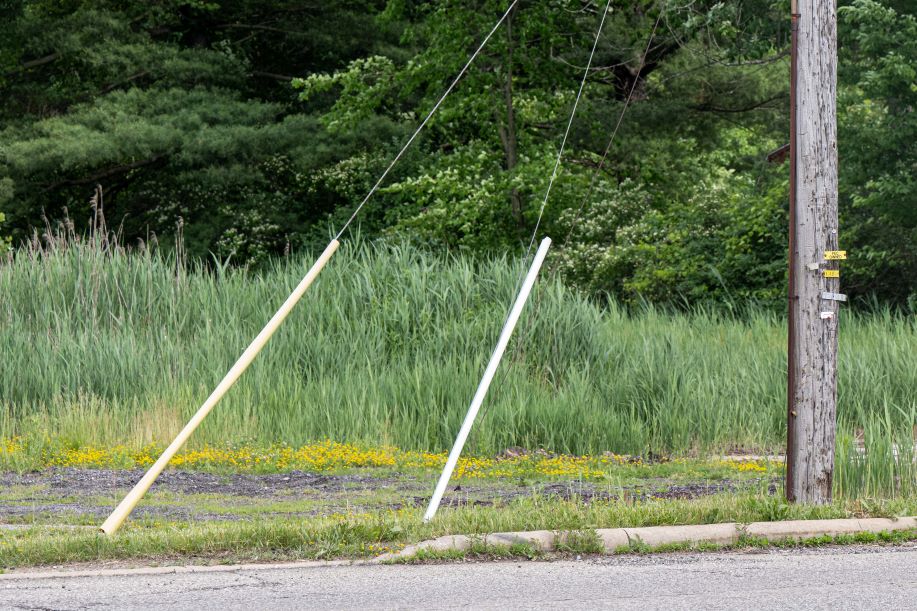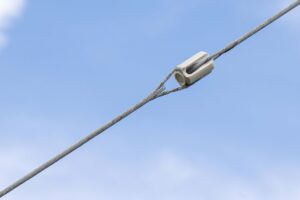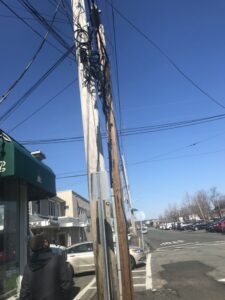Forming Good Habits Will Prevent Accidents
By Kevin Myers

In our industry, we all know how dangerous electricity is. We know that it only takes as little as 1/10 of an amp to cause cardiac arrest. We walk by utility poles, guy wires, and ground wires daily; they are always within reach. The Z133 tells us in paragraph 4.1.2 that “guy wires, pole grounds, communication wires, and cables shall be considered energized with potentially fatal voltages.”
Energized, not conductive!
Energized means that electricity is flowing through the object, whereas conductive simply means that electricity could flow through the object. Did you know that the ground wire that runs up the utility pole is attached to everything on that pole that is conductive, which is not supposed to be energized? It is also attached to the neutral wire. Have you ever touched a ground wire, pole, communication wire, or guy wire as you walked by? Most of us have at some point and we didn’t receive a shock. So why is there this safety requirement to treat all these as energized? Sure, it could happen, but does it ever happen?
In 2018, three young men in Mexico were electrocuted after touching a utility pole that was partially submerged in floodwater. In 2016, a man lost his life, and his nephew lost his arms when they made contact with a guy wire that had become energized. After an investigation into the 2016 incident, it was discovered that the guy wire had been installed incorrectly for nearly 50 years before it took a life.
Incidents like these are rare, but they do happen. Arbitrarily, I would suggest that 99% of the time if a person were to contact a pole, guy wire, ground wire, or communication wire, they would not incur any injuries. However, there is always that one percent chance that it could happen, and history shows that it does happen. We can easily avoid that one percent by simply treating all these portions of the utility system as energized, refraining from contacting them. Remember, when you are looking up at the powerlines, you are only seeing a small piece of a very large circuit. Something could be malfunctioning miles down the road, where you can’t see it, causing the utility pole you are standing by to become energized.
In my earlier years of doing line clearance work, we were pruning around a three-phase circuit, and at one end of the span we were working on there was a single-phase tap running to a house far off the road. I was leaning on that pole, watching the trimmer, when a large pine tree failed and came across the single-phase tap a few poles away causing the fuse above my head to blow. I didn’t receive any injuries, but I remember how random that was.
Looking back, I now know how deadly that could have been for me, so I make a habit of never touching any of the utility’s systems. I remind myself that I am an arborist — I touch the trees and only the trees — everything else is for the linemen.
I recently taught a class in New Jersey. While we were walking around identifying hardware and apparatus on their local utility system, we found the pole pictured on the right.
At some point in the past, this pole caught fire from an electrical arc that came from the messenger cable that holds the communication wires to the pole. This pole is located on a busy street corner in front of a bagel shop. Imagine if you or someone you care about was leaning on that pole waiting to cross the road.
Even though it is highly unlikely that anything would ever happen, remember that it is possible, and that you can prevent that one percent chance of not seeing your loved ones again by developing good habits.
Kevin Myers is an arborist training instructor with ACRT Arborist Training and has been part of the tree care industry for more than 10 years. He is a Certified Treecare Safety Professional (CTSP), an International Society of Arboriculture (ISA)-certified arborist and ISA-certified Utility Specialist, and a recipient of the 2016 UAA Silver Shield Award. Prior to joining ACRT Arborist Training, Myers served as a consulting utility forester for ACRT at a large transmission and distribution utility in the southeastern part of the United States. His previous experience includes utility line clearance operations as well as residential and commercial arboricultural operations. Myers serves on the Events Committee for the UAA and is the Task Group Chair responsible for updating the Electrical Hazard section of the ANSI Z133. He is a member of the ISA, UAA, Georgia Arborist Association, and the Georgia Urban Forestry Commission.




